 The nature of the Open Championship, or British Open, is such that it is almost inevitable that some winners with long odds would be successful in it at some point or another. It has been taking place since 1860, which was when it was founded at Prestwick Golf Club in Scotland, where it was held annually during the tournament’s formative years. Organised by the Royal & Ancient, it is one of golf’s four Majors, alongside the the US Open, the Masters and the PGA Championship. The title of ‘Open’ is used to indicate that any golfers can theoretically enter it.
The nature of the Open Championship, or British Open, is such that it is almost inevitable that some winners with long odds would be successful in it at some point or another. It has been taking place since 1860, which was when it was founded at Prestwick Golf Club in Scotland, where it was held annually during the tournament’s formative years. Organised by the Royal & Ancient, it is one of golf’s four Majors, alongside the the US Open, the Masters and the PGA Championship. The title of ‘Open’ is used to indicate that any golfers can theoretically enter it.
In reality, of course, the competition is mainly for professionals, though some amateurs do also play in it. Because of the sheer number of golfers who would want to take part if it was really open to all, there are qualification tournaments that take place in the lead-up to the Open getting underway, which help to separate the wheat from the chaff. Even the professional golfers out there struggle to do well in the Open, which is why so many winners of it have had longer odds than one might expect for such a tournament.
The Biggest Priced Winner of the Open
Since 1984, the biggest priced winner of the Open Championship is US golfer Ben Curtis who lifted the Claret Jug in 2003 having started the tournament at odds of 500/1.
The average odds of winners in this time is just under 51/1. The shortest odds winner was Tiger Woods in 2000 at just 6/4.
The Odds of Open Championship Winners
In order to get a sense of whether odds are long or not, it helps to have a look at the odds of the winners from the past. The majority of the information that we have tells us what the odds were before the tournament got underway, dating back as far as 1984. As a result, here’s a look at the winners since then, as well the odds that the bookmakers assigned to them before a ball was hit. As you might imagine, the odds are extremely varied, but it helps to understand what sort of odds can be considered ‘long’ for British Open winners:
Open Championship Winners – 1984 to 2022
| Year | Winner | Odds |
| 2022 | Cameron Smith | 28/1 |
| 2021 | Colin Morikawa | 30/1 |
| 2020 | N/A | N/A |
| 2019 | Shane Lowry | 80/1 |
| 2018 | Francesco Molinari | 25/1 |
| 2017 | Jordan Spieth | 12/1 |
| 2016 | Henrik Stenson | 25/1 |
| 2015 | Zach Johnson | 80/1 |
| 2014 | Rory McIlroy | 12/1 |
| 2013 | Phil Mickelson | 15/1 |
| 2012 | Ernie Els | 40/1 |
| 2011 | Darren Clarke | 150/1 |
| 2010 | Louis Oosthuizen | 200/1 |
| 2009 | Stewart Cink | 125/1 |
| 2008 | Padraig Harrington | 30/1 |
| 2007 | Padraig Harrington | 25/1 |
| 2006 | Tiger Woods | 5/1 |
| 2005 | Tiger Woods | 3/1 |
| 2004 | Todd Hamilton | 150/1* |
| 2003 | Ben Curtis | 500/1 |
| 2002 | Ernie Els | 12/1 |
| 2001 | David Duval | 25/1 |
| 2000 | Tiger Woods | 6/4 |
| 1999 | Paul Lawrie | 60/1* |
| 1998 | Mark O’Meara | 22/1 |
| 1997 | Justin Leonard | 40/1 |
| 1996 | Tom Lehman | 15/1 |
| 1995 | John Daly | 60/1* |
| 1994 | Nick Price | 12/1 |
| 1993 | Greg Norman | 20/1 |
| 1992 | Nick Faldo | 5/1 |
| 1991 | Ian Baker-Finch | 12/1 |
| 1990 | Nick Faldo | 4/1 |
| 1989 | Mark Calcaveccia | 25/1 |
| 1988 | Seve Ballesteros | 8/1 |
| 1987 | Nick Faldo | 17/1 |
| 1986 | Greg Norman | 20/1 |
| 1985 | Sandy Lyle | 15/1 |
| 1984 | Seve Ballesteros | 5/1 |
In cases where an asterisk (*) appears next to the odds, these players weren’t given odds of their own by the bookmakers. Instead, they were included as being part of the ‘field’, with some bookies not giving certain golfers odds and instead merely suggesting that a golfer other than the favourite will win. We’ve listed them at the longest available odds quoted but in reality, their odds will likely have been much higher than this.
Across the 37 years in question, the average odds of the winner was 51/1. That is skewed slightly by some huge odds, but generally speaking you would have to have had odds of significantly more than 51/1 in order for them to be considered ‘long’ when it comes to The Open. The shortest odds were those of Tiger Woods in 2000 when he was rated as a 6/4 chance of being victorious, whilst the longest were the 500/1 for Ben Curtis in 2003.
Ben Curtis – The Longest Priced Open Champion at 500/1

Going into the 2003 Open Championship Ben Curtis was a relative unknown to most. Ranked number 396 in the world, the 26-year-old American from Ohio had only turned professional in 2000 and gained his PGA Tour card just 7 months before the 132nd Open at Royal St George’s in Sandwich, Kent, when tying for 26th at Q-School at the PGA West in California.
Curtis’s odds of 500/1 had few putting him in the frame for winning the major but a first round 72 left the American tied for 13th place, four shots off the leader. A further 72 on Friday had Curtis tied for 4th but he was leapfrogged by Denmark’s Thomas Bjorn who shot 70. A third round 69 put the Dane firmly in front going into the final round.
Day four started with Bjorn 2 strokes ahead of Curtis but that changed on the very first hole when the US golfer, playing ahead of Bjorn, birdied. Ben Curtis then made five more birdies over the next ten holes without dropping a shot. However, four bogeys between holes 12 and 17 left Curtis 3 shots off Bjorn as he moved to the 18th.
Bjorn dropped a shot on the 15th and as Curtis parred the final hole, the Dane double bogeyed from a bunker on the 16th to bring the pair level on 1 under. Bjorn bogeyed again on the 17th to hand the clubhouse lead to Curtis. The Dane couldn’t pick up the shots he needed on the 18th leaving Ben Curtis to lift the Claret Jug in one of the Open’s biggest upsets.
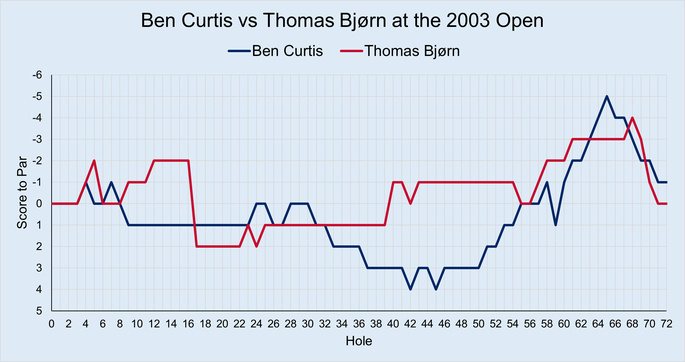
Other Long Shots Who Won the Open
There are a number of other players who upset the odds at the Open. It is worth having a look at them and seeing whether or not the odds that they were given by bookmakers ahead of the tournament were fair, or whether some of them were to be expected, all things considered. In some cases, it is about the golfer having been past their best by the time the competition came around, whilst in others it was about them being unfancied ahead of the tournament, as you’ll read.
Louis Oosthuizen, 2010 – 200/1
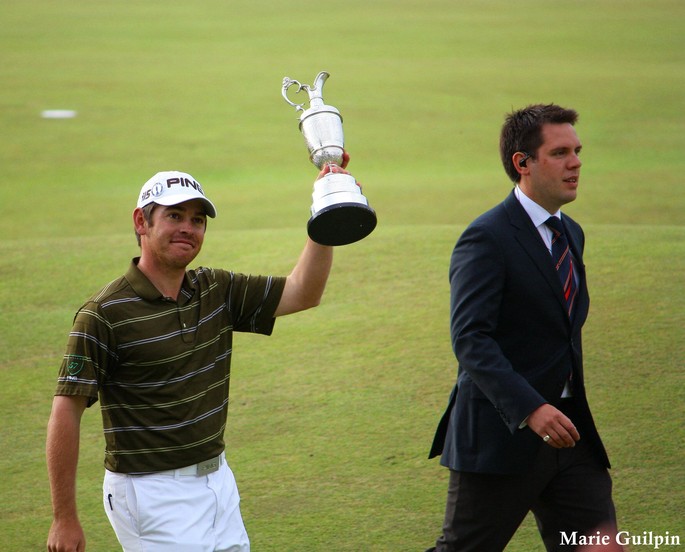
By Marie Guilpin, Flickr
Lodewicus Theodorus Oosthuizen, better known as Louis, was born in South Africa in October of 1982. He finished as the runner-up in the Masters in 2012, the US Open in 2015 and 2021 and the PGA Championship in 2017 and 2021, but before all of that he won The Open in 2010. During his early career, he gained financial support from Ernie Els, his fellow South African golfer who set up a foundation to help his countrymen get into the sport that he had enjoyed such success in.
Oosthuizen turned professional in 2002 when he was 19-years-old, winning his first professional tournament two years later when he was victorious in the Vodacom Origins of Golf at Arabella. Four more wins followed, but it was his performance at the British Open that helped him make his name. Having entered eight Majors before 2010, he had made the cut just once and was ranked as the 54th best player in the world at the time that the 2010 tournament got underway. His success, therefore, was very much unseen.
His two-day total at the end of the second day was 132, a St. Andrews Open Championship record at the time. His final score at the end of the contest was 272, which was the second-lowest at St. Andrews. The victory saw him become just the fourth South African to win the Claret Jug and resulted in him moving up to 15th in the world. The man himself credited his ability to focus during the tournament on a red dot on his glove, which was an idea give to him by sports psychologist Karl Morris in the build-up to the Open.
Darren Clarke, 2011 – 150/1

By Jenni Douglas, flickr
Born in Northern Ireland in 1968, Darren Clarke had attempted to win a Major on 54 occasions prior to his eventual success in the British Open. Between 2000 and 2002, he was ranked in the top ten players in the Official World Golf Ranking, having finished second on the European Tour money list in 1998, 2000 and 2003. To put it another way, Clarke was not a poor golfer by the time the 2011 British Open came around, but it would not be unfair to suggest that he had enjoyed better days as a player.
His Open Championship win was his first victory on the European Tour for three years. It was also the first time since 2001 that he’d even managed to finish in the top ten of a Major tournament. Having lost his wife to breast cancer five years earlier, it is fair to say that Clarke’s win was an emotional one, not just for him but for everyone associated with the sport. The win was also the first time for 100 years that a country other than the United States of America had seen its residents win back-to-back Majors.
Clarke’s win came on the back of Rory McIlroy’s victory in the US Open a month earlier, meaning that two Majors in successions were won by golfers from Northern Ireland. Added to Graeme McDowell’s win in the US Open in 2010, it meant that Northern Irish golfers had won three Majors in 13 months. Even allowing for the success of golfers from the region, Clarke’s long odds weren’t outrageous considering his previous lack of success in the Majors in the period building up to the competition.
Stewart Cink, 2009 – 125/1
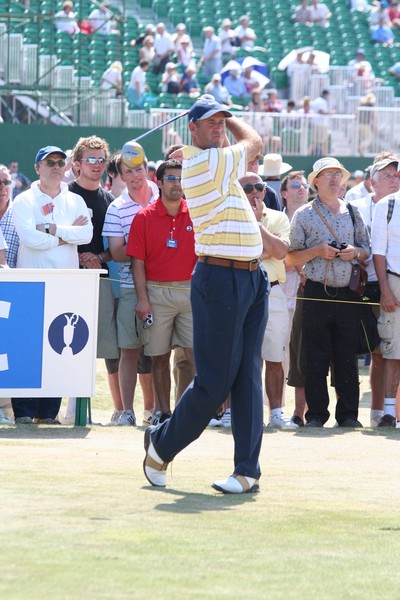
By Steven Newton, flickr
In terms of why a golfer had odds as long as they did for The Open, it isn’t easy to understand why the bookmakers didn’t like the look of Stewart Cink in the build-up to the 2009 tournament; after all, he’d been in the top ten of the Official World Golf Ranking for 40 weeks between 2004 and 2009, achieving a career-best ranking of fifth the year before. Cink, who grew up in Alabama, joined the PGA Tour in 1997 after winning the Mexican Open and three events on the Nike Tour a year earlier.
Bookies will have thought that their odds for the American were relatively justified, given that he sat two shots behind leader Tom Watson as the players played the 72nd hole of the tournament. It was something of a phoenix from the flames hole for Cink, however, when his birdie and a bogey for Watson meant that a play-off was forced. Cink won the play-off by six strokes over the four holes in question, seeing him win the first Major of his career and defying the pre-tournament odds of the betting world.
All told, though, the bookmakers will still think that they made the right call. The fact that Cink struggled on the PGA Tour in the wake of his Open win suggests that it was luck, rather than judgement, that saw him earn a Major victory. Indeed, it took until 2020 for him to win a tournament after his Open success, which came thanks to the Safeway Open. He did host the East Lake Invitational every year at East Lake Golf Club, doing so alongside Billy Andrade to benefit the East Lake Foundation.
Shane Lowry, 2019 – 80/1
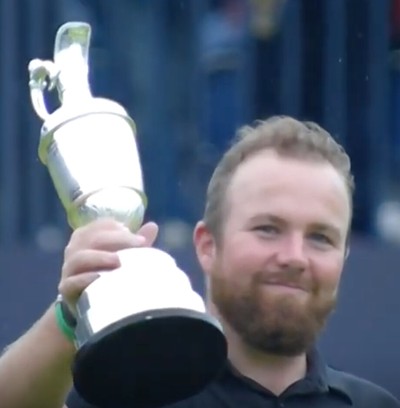 Shane Lowry’s success at the Open Championship in 2019 shouldn’t have come as a complete shock to bookmakers, considering he won the Irish Open as an amateur a decade earlier. Not only that, but he had won the WGC-Bridgestone Invitational in 2015, suggesting that he had what it took to get over the line when the pressure was one. Even so, the bookmakers must have looked at the fact that he’d been playing professionally for a decade without making a huge impact on the Majors as a reason to under-rate him.
Shane Lowry’s success at the Open Championship in 2019 shouldn’t have come as a complete shock to bookmakers, considering he won the Irish Open as an amateur a decade earlier. Not only that, but he had won the WGC-Bridgestone Invitational in 2015, suggesting that he had what it took to get over the line when the pressure was one. Even so, the bookmakers must have looked at the fact that he’d been playing professionally for a decade without making a huge impact on the Majors as a reason to under-rate him.
We know now that they were wrong to do so, with the fact that he finished tied for second place at the US Open in 2016 also ignored. Born and raised in the Republic of Ireland, Lowry played his golf at Esker Hills Golf Club, which was where he was playing when he defeated Robert Rock on the third hole of a sudden death play-off to win the Irish Open at County Louth Golf Club in 2009. The fact that he didn’t win a European Tour tournament between 2016 and 2018 might also have lulled the Bookies into a false sense of security.
He was ranked as the 33rd best player in the world heading into The Open in 2019. He shot 67 in his two opening rounds, handing him a joint-lead with J. B. Holmes at the halfway stage. A 63 in his third round meant that he led by four shots from Tommy Fleetwood heading into the final day. The conditions were challenging, but his 72 was enough to see him win the Claret Jug, finishing six shots clear of Fleetwood. Due to world events, he actually ended up keeping hold of the jug for two years when the Open was cancelled in 2020.
Zach Johnson, 2015 – 80/1
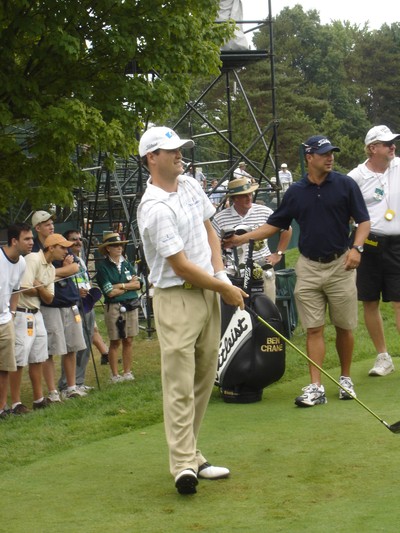
By rottinam, flickr
When it comes to odd decisions by bookmakers, their decision to have Zach Johnson as long as 80/1 for the 2015 British Open is certainly up there. The American had already won a Major thanks to his success in the Masters in 2007, but perhaps the bookies were sticking to the old adage that American golfers tend to struggle playing on British courses. Having turned professional in 1998, Johnson topped the money list at that level in 2003 thanks to earnings of nearly $500,000. That saw him gain a promotion to the PGA Tour.
Johnson won his first PGA Tour event, which was the BellSouth Classic, following that success up by coming close in a number of big competitions in 2006. It was the following year when he properly made a name for himself, though, thanks to his win at Augusta, finishing two shots clear of Tiger Woods and others. He won other tournaments in the years that followed, meaning that by the time the 2015 Open Championship rolled around, he really should have been give more respect by the bookies when they were pricing him up.
The bookmakers, of course, would doubtless point to the fact that the Open in 2015 went to a three-way play-off as proof that Johnson did require some good fortune to emerge victorious. Even so, he saw off the challenges of Louis Oosthuizen and Mark Leishman to become just the sixth golfer to win Majors at both Augusta and St. Andrews in their careers. Given that the others were Sam Snead, Nick Faldo, Tiger Woods, Jack Nicklaus and Seve Ballesteros, he is in good company.
Ernie Els, 2012 – 40/1
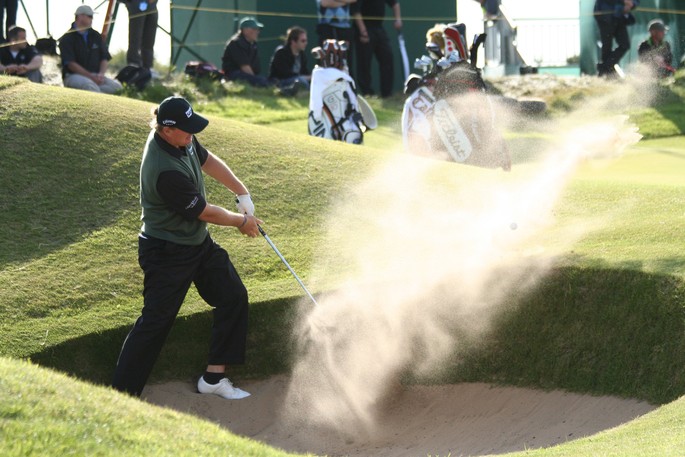
By Steven Newton, flickr
Known as ‘The Big Easy’ on account of his fluid swing and his large stature, Theodore Ernest ‘Ernie’ Els has enjoyed more than 70 career victories as a professional golfer. The fact that that includes four Major wins means that questions might be asked of bookmakers for pricing him so highly for The Open in 2012. That being said, they would doubtless point to the fact that three of those wins came in 1994, 1997 and 2002 as proof that the South African was past his best by the time the fourth win arrived.
Bookies would also point to the fact that Adam Scott was the leader after 54 holes with a score of -11, whilst Els was six strokes off the lead and tied for fifth heading into the final day. Indeed, the betting industry as a whole would probably point to Scott and say that he blew the 2012 Open Championship more than Els won it. That’s on account of the fact that the Australian was four shots ahead with four to play, meaning that it would have taken a virtual miracle for Els, two groups ahead of him, to end up as the winner.
Whether or not a player bogeying all four of the final holes classes as a miracle is a matter for some debate, but Els did all that he could when he shot a 68 on his final round and took the clubhouse lead with -7 thanks to a birdie on the 18th. Scott did indeed bogey all four of the final holes, seeing him miss out on his first Major by a single shot. He bounced back well enough, winning the Masters the following year, whilst for Els it proved to be a swan-song.
Justin Leonard, 1997 – 40/1
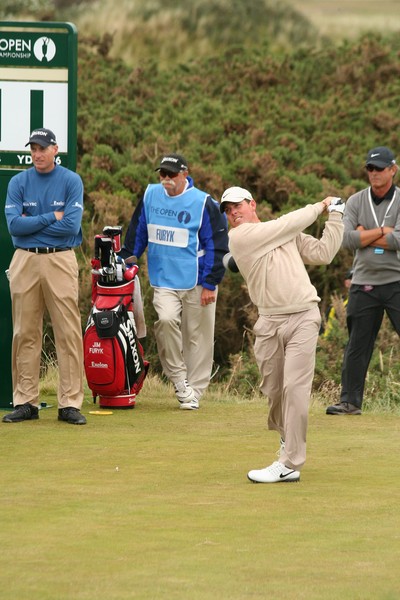
By Steven Newton, flickr
A native of Dallas, Texas, Justin Leonard was a promising amateur golfer who turned professional in 1994. He was just the fourth person to move straight to the PGA Tour without first going through Q School when he turned pro, following in the footsteps of Gary Hallberg, Scott Verplank, and Phil Mickelson. If bookmakers were asked why they priced him as a relative outsider for the 1997 Open, they would almost certainly point to the fact that Leonard was far from a golden boy of golf at the time of the championship.
Though he would go on to tie for second in the PGA Championship in August of that year and be selected for the Ryder Cup team in the September, he has tied for seventh in the Masters and wasn’t looking like much in the build-up to the Open. Indeed, he has only won 12 PGA Tour competitions to date, so it’s not as if he has gone on to prove the bookies wrong in his career after his Open victory. Even so, he took the golfing world by surprise in 1997 when he defied odds of 40/1 to win at Royal Troon in Scotland.
Leonard had scored a 72 in his third round of the Open, meaning that he wasn’t really being thought of as a likely winner as the final day got underway. He started the Sunday five strokes off the lead, but enjoyed six birdies in the front nine and added another two to his card on the 16th and 17th to post a final score of -6. That saw him finish three shots clear of the 54-hole leader Jesper Parnevik, as well as Darren Clarke. Though he didn’t do a huge amount afterwards, he will always be a British Open winner.
Padraig Harrington, 2007 & 2008

By Corn Farmer, flickr
Though Padraig Harrington wasn’t lower than average when it came to his odds either of the times that he won the Open Championship, he is still worthy of a mention here. It isn’t so much that Harrington was under-valued by the bookmakers, but that they didn’t learn their lesson. The man from Dublin had enjoyed a successful amateur career before turning professional in 1995 and joined the European Tour a year later. He did so after studying accountancy at university and only playing golf as an amateur until later in life.
He won a number of high-profile competitions in the years after turning pro, including the 1998 Irish PGA Championship. His success had earned him a place on the Ryder Cup team, with the Irishman adding a number of other nice wins to his CV over the years. Yet it was in 2007 when he hit the big time, taking on Sergio García in a play-off for The Open. He won the tournament by one stroke, defying the odds of 25/1 that the bookies had put on him ahead of the competition getting underway.
In spite of this, the bookmakers continued to undervalue him the year after, when The Open moved from Carnoustie to Royal Birkdale. In their defence, he had hurt his wrist in the build-up to the competition and it wasn’t clear whether he would even take part. Not only did he take part, he came from two shots behind to defeat Greg Norman thanks to a final-day 69. He shot the back nine of his final round four-under-par, including an eagle on the 17th. It meant that he became the first European golfer since 1906 to retain the Claret Jug, defying the bookies once again.
Why Does The Open Have So Many Big Priced Entrants?
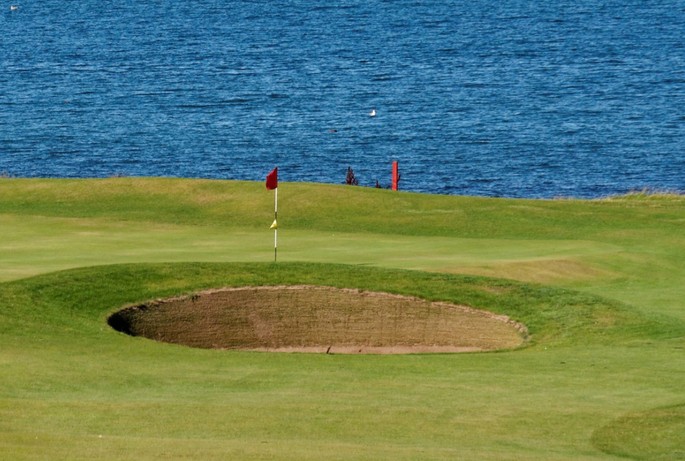
It is not uncommon to see golfers given odds of 3,000/1 to win the Open Championship. Indeed, in 2021 alone, 11 different golfers were given such outrageously long odds to win outright. That obviously begs the question: why? The answer comes in the format of the competition, which has had a qualifying phase in place since 1907. In the modern era, the majority of professional players get an exemption from qualifying based on numerous different things, including their performances in previous Opens and other Majors.
There are a series of global events, known as the Open Qualifying Series, that take place in the build-up to the Open and offer a way of qualifying for it for those that don’t get in automatically. Any male professional or amateur that plays off scratch and has been ranked within the top 2,000 World Amateur Golf Rankings in the previous year can take part in local qualifiers, which will see them progress to Final Qualifying. This is a 36-hole event that takes place in four different locations around the United Kingdom at the same time.
Twelve places in the British Open are offered to the winners of the Final Qualifying phase, meaning that there’s no reason why an amateur golfer in particularly good form couldn’t make it to the Open proper. When it comes around, 156 players take to the course, with the top 70 and those tied for 70th place progressing past the first two rounds. One player who managed to do that in 2021, for example, was Mathias Schmid, who shot a round of 65 on day two of the Open at Royal St. George’s to equal a decade-old record.
The 23-year-old amateur, who had missed the cut in his only previous Open appearance two years earlier, hit 16 greens-in-regulation on what is a tough course. That, alongside five birdies, meant that he equalled the lowest round managed by an amateur ever in the Open Championship. Though he didn’t manage to get his name on the list of winners, he proved that the Open really is a competition that anyone can make history in if they hit the ball well and are able to cope with the pressure of such a prestigious tournament.
Whilst it is possible for anyone to win the Open, only four players ranked outside the top 100 of the World Golf Ranking have actually done so since 1986. That John Daly was ranked 109th and Ben Curtis was 369th shows why they were considered so unlikely to triumph at The Open. Interestingly, of the four long-shot winners, two of them managed it whilst playing at Royal St. Georges, suggesting that that is a slightly more generous course than others that host The Open.
